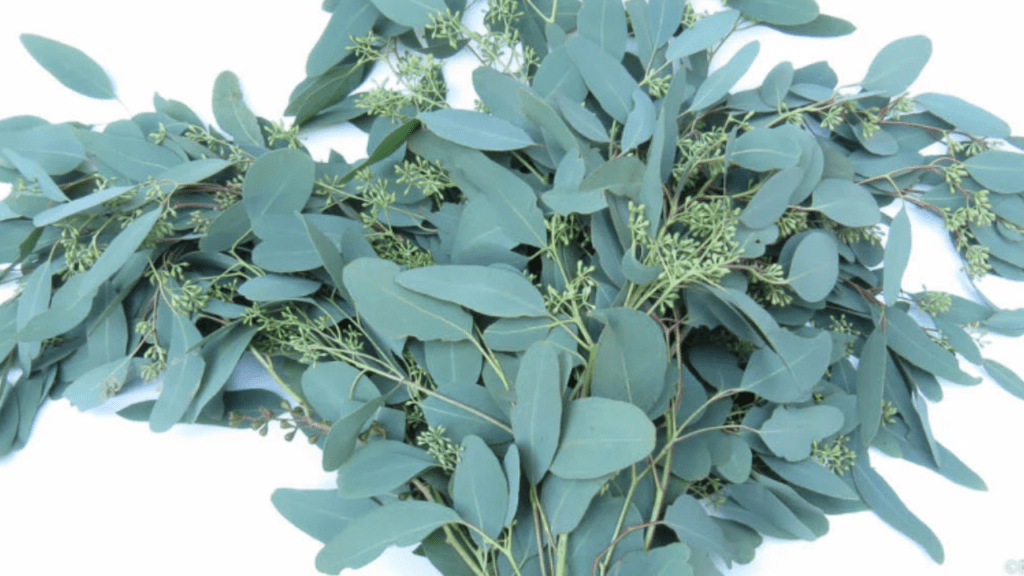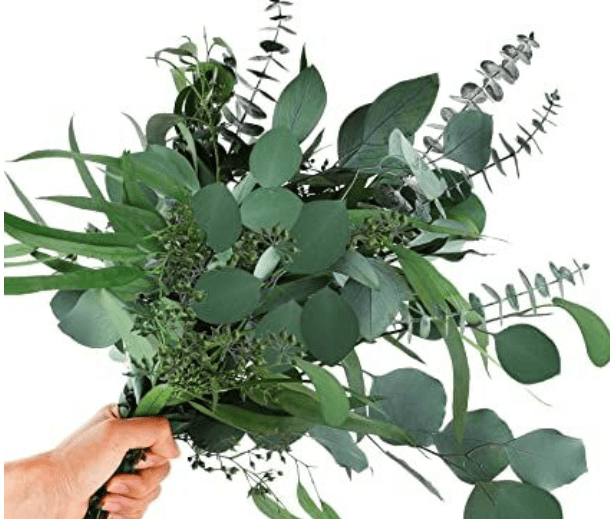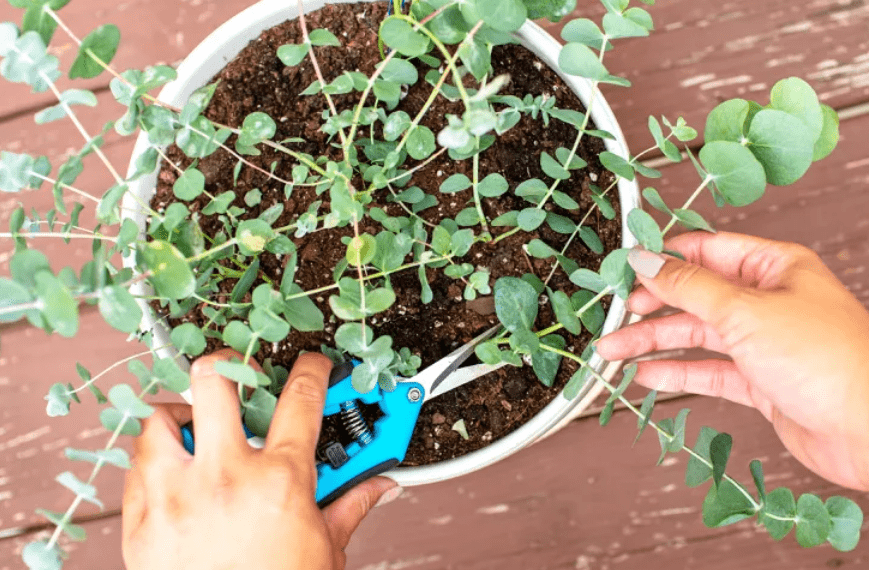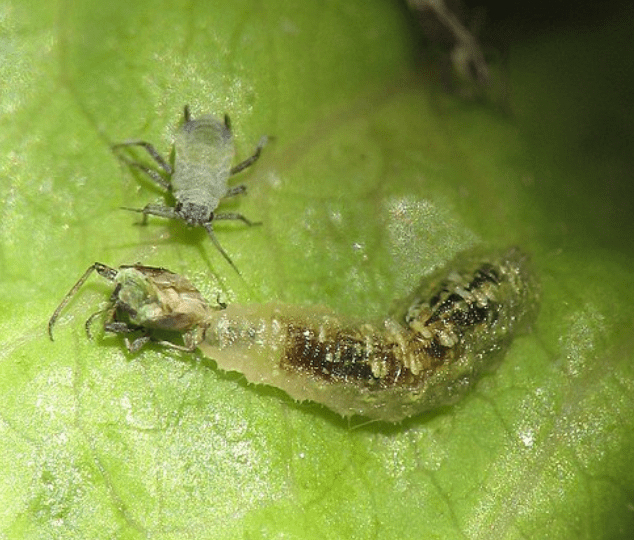
Seeded Eucalyptus Plant: A Complete Guide to Growing and Caring
In this complete guide, we will cover everything you need to know about growing and caring for seeded eucalyptus plants. Whether you’re a beginner or experienced gardener, this guide will provide you with the essential tips and advice to ensure the health and success of your seeded eucalyptus plant. From planting and watering to preventing common pests and diseases, we’ve got you covered. So let’s dive in and learn how to cultivate and care for this beautiful and versatile plant.
Seeded eucalyptus plants are a popular choice for gardeners due to their beautiful foliage and aromatic scent. When it comes to successfully growing and caring for these plants, there are a few key factors to keep in mind. First, it’s important to choose the right location for planting your seeded eucalyptus. These plants thrive in full sun and well-drained soil, so be sure to select a spot in your garden that meets these requirements. When it comes to watering, seeded eucalyptus plants prefer slightly moist soil, but be careful not to overwater as this can lead to root rot. As for pests and diseases, keeping an eye out for common issues such as aphids and leaf spot can help ensure the health of your plant. With the proper care and attention, you can enjoy the beauty of a thriving seeded eucalyptus plant in your garden.
Table of Contents
ToggleOverview of Seeded Eucalyptus Plant
Seeded eucalyptus plants are a popular choice for gardeners due to their beautiful foliage and aromatic scent. These plants are known for their ability to add texture and interest to floral arrangements and are often used in bouquets and centerpieces. When it comes to successfully growing and caring for these plants, there are a few key factors to keep in mind.
First, it’s important to choose the right location for planting your seeded eucalyptus. These plants thrive in full sun and well-drained soil, so be sure to select a spot in your garden that meets these requirements. It’s also important to space the plants adequately to allow for proper air circulation and growth.
When it comes to watering, seeded eucalyptus plants prefer slightly moist soil, but be careful not to overwater as this can lead to root rot. Regular watering during dry periods is important to keep the soil consistently moist but not waterlogged.
As for pests and diseases, keeping an eye out for common issues such as aphids and leaf spot can help ensure the health of your plant. If you notice any signs of pests or disease, it’s important to take action promptly to prevent further damage.
With the proper care and attention, you can enjoy the beauty of a thriving seeded eucalyptus plant in your garden. Whether you’re using it for its aromatic foliage or as a decorative element in your garden, seeded eucalyptus is a versatile and attractive plant to grow.

What is a Seeded Eucalyptus Plant?
The Seeded Eucalyptus plant is a versatile and attractive plant that is popular for its aromatic foliage and decorative elements. It is important to space the plants adequately to allow for proper air circulation and growth. When it comes to watering, seeded eucalyptus plants prefer slightly moist soil, but be careful not to overwater as this can lead to root rot. Regular watering during dry periods is important to keep the soil consistently moist but not waterlogged. As for pests and diseases, keeping an eye out for common issues such as aphids and leaf spot can help ensure the health of your plant. If you notice any signs of pests or disease, it’s important to take action promptly to prevent further damage. With the proper care and attention, you can enjoy the beauty of a thriving seeded eucalyptus plant in your garden. Whether you’re using it for its aromatic foliage or as a decorative element in your garden, seeded eucalyptus is a versatile and attractive plant to grow.
Types and Varieties
Seeded eucalyptus plants come in a variety of types and varieties, each with their own unique characteristics. Some popular varieties include Silver Drop, Silver Bells, and Baby Blue. These varieties have different leaf shapes and colors, making them a versatile and attractive addition to any garden. When choosing a variety of seeded eucalyptus, consider the size of your garden and the specific look you want to achieve. Some varieties may be more compact and suitable for smaller spaces, while others may have a more sprawling growth habit. It’s important to research and select the right variety for your specific needs and preferences. With the right choice, you can enjoy the beauty and versatility of seeded eucalyptus in your garden.
Growing and Caring for Seeded Eucalyptus Plant
Ideal Growing Conditions
Seeded eucalyptus plants thrive in well-drained soil and full sunlight. They can tolerate a variety of soil types, but prefer slightly acidic soil. It’s important to water the plants regularly, especially during the hot summer months. Pruning is also important to encourage strong, bushy growth and to control the size and shape of the plant. Overall, seeded eucalyptus plants are relatively low-maintenance and can bring a beautiful touch to any garden when grown in the right conditions.
Planting Guidelines
When it comes to planting seeded eucalyptus, it’s important to research and select the right variety for your specific needs and preferences. With the right choice, you can enjoy the beauty and versatility of seeded eucalyptus in your garden. In terms of ideal growing conditions, seeded eucalyptus plants thrive in well-drained soil and full sunlight. They can tolerate a variety of soil types but prefer slightly acidic soil. It’s important to water the plants regularly, especially during the hot summer months. Pruning is also important to encourage strong, bushy growth and to control the size and shape of the plant. Overall, seeded eucalyptus plants are relatively low-maintenance and can bring a beautiful touch to any garden when grown in the right conditions. So, taking the time to research the best variety for your garden and providing the ideal growing conditions can help you create a beautiful and thriving eucalyptus plant in your garden.
Maintenance and Care
Pruning, watering, and fertilizing tips.

When it comes to growing seeded eucalyptus in your garden, there are a few key tips to keep in mind. First, it’s important to ensure that the plants are grown in well-drained soil and receive plenty of sunlight. They can tolerate various soil types but prefer slightly acidic soil. Regular watering, especially during the hot summer months, is essential to keep the plants healthy. Additionally, pruning is important to encourage strong, bushy growth and to control the size and shape of the plant. As for fertilizing, a balanced fertilizer can be applied in the spring to support healthy growth. Overall, seeded eucalyptus plants are relatively low-maintenance and can add a beautiful touch to any garden when grown in the right conditions. By researching the best variety for your garden and providing the ideal growing conditions, you can create a beautiful and thriving eucalyptus plant in your garden.
Common pests and diseases, with organic treatment options.

There are a few common pests and diseases that can affect eucalyptus plants, but there are also organic treatment options to help keep them healthy. One common pest is the eucalyptus gall wasp, which can cause damage to the leaves and stems of the plant. To control this pest organically, you can introduce natural predators such as parasitic wasps to help keep the population in check. Another common issue is powdery mildew, a fungal disease that can affect the leaves of the eucalyptus plant. To treat this organically, you can use a neem oil spray or a mixture of baking soda and water to help prevent and control the spread of powdery mildew. It’s important to regularly inspect your eucalyptus plants for signs of pests or diseases and take prompt action to address any issues. By using organic treatment options, you can keep your eucalyptus plants healthy while also minimizing the use of synthetic chemicals in your garden.
Benefits and Uses of Seeded Eucalyptus Plant
Environmental Benefits
The eucalyptus plant has many environmental benefits. It is known for its ability to absorb a large amount of carbon dioxide, making it an important tool in the fight against climate change. The plant also releases a compound called eucalyptol, which has been shown to have antimicrobial properties, helping to improve air quality. Additionally, eucalyptus trees are fast-growing and can thrive in a variety of soil types, making them a valuable resource for reforestation and soil conservation efforts. Overall, the eucalyptus plant plays a crucial role in promoting environmental sustainability and improving the overall health of our planet.
Commercial and Practical Uses
Eucalyptus plants have a wide range of commercial and practical uses. The oil extracted from eucalyptus leaves is commonly used in aromatherapy and as an ingredient in many over-the-counter cold and cough remedies. It has natural anti-inflammatory and decongestant properties, making it a popular choice for relieving respiratory issues. Eucalyptus wood is also valued for its strength and durability, often used in construction and furniture-making. Additionally, the dried leaves and branches of the eucalyptus plant are frequently used in floral arrangements and wreaths due to their pleasant fragrance and attractive appearance. In the agricultural sector, eucalyptus trees are cultivated for their fast-growing wood, which is used for paper production and as a source of biomass energy. Overall, the eucalyptus plant has a wide range of practical and commercial applications, making it a valuable and versatile resource.
Seeded Eucalyptus in Landscaping and Decoration
Landscaping Ideas
Seeded Eucalyptus is a great addition to any landscaping project or decoration. Its unique appearance and pleasant fragrance make it a popular choice for adding visual interest and scent to outdoor spaces. The small, round seeds and silver-gray leaves of the seeded eucalyptus plant create a beautiful and natural look that can enhance the overall aesthetic of your landscape. Additionally, seeded eucalyptus is commonly used in floral arrangements and wreaths, adding a touch of elegance and charm to any space. Whether you are looking to enhance your outdoor environment or create stunning floral displays, seeded eucalyptus is a versatile and attractive option for your landscaping and decoration needs.
Decorative Uses
Seeded Eucalyptus is a great addition to any landscaping project or decoration. Its unique appearance and pleasant fragrance make it a popular choice for adding visual interest and scent to outdoor spaces. The small, round seeds and silver-gray leaves of the seeded eucalyptus plant create a beautiful and natural look that can enhance the overall aesthetic of your landscape. Additionally, seeded eucalyptus is commonly used in floral arrangements and wreaths, adding a touch of elegance and charm to any space. Whether you are looking to enhance your outdoor environment or create stunning floral displays, seeded eucalyptus is a versatile and attractive option for your landscaping and decoration needs. In addition to its decorative uses, eucalyptus trees are also cultivated for their fast-growing wood, which is used for paper production and as a source of biomass energy, making it a valuable and versatile resource.
Challenges and Considerations
Common Challenges
Seeded eucalyptus is a versatile and attractive option for landscaping and decoration, but there are some common challenges to consider. One challenge is that eucalyptus trees can be invasive in some regions, so it’s important to research and understand the potential impact on the local environment before planting. Additionally, eucalyptus trees are susceptible to certain pests and diseases, so it’s important to monitor and treat any issues that may arise. Another challenge is that eucalyptus trees require a lot of water, so it’s important to ensure they are planted in a location with adequate irrigation. Finally, eucalyptus trees have a strong root system that can compete with other plants for water and nutrients, so it’s important to consider their placement in relation to other landscaping elements. By being aware of these challenges and considering them in your landscaping plans, you can effectively incorporate seeded eucalyptus into your outdoor spaces.
Environmental Impact
Seeded eucalyptus is a versatile and attractive option for landscaping and decoration, but there are some important factors to consider regarding its environmental impact. Eucalyptus trees have the potential to be invasive in certain regions, so it’s crucial to research and understand the local environment before planting them. Additionally, eucalyptus trees require a significant amount of water, so it’s important to ensure they are planted in areas with adequate irrigation to minimize water usage. They also have a strong root system that can compete with other plants for water and nutrients, so careful consideration must be given to their placement in relation to other landscaping elements. Despite these challenges, eucalyptus trees are valuable for their fast-growing wood, used for paper production and biomass energy, making them a versatile and valuable resource when managed responsibly. By understanding and addressing these environmental considerations, seeded eucalyptus can be effectively and sustainably incorporated into outdoor spaces.
In conclusion, growing and caring for seeded eucalyptus plants can be a rewarding and enjoyable experience. By following the tips and advice in this guide, you can ensure that your plants thrive and remain healthy. Remember to provide the right growing conditions, regular watering, and proper care to prevent any potential issues. With the right attention and care, your seeded eucalyptus plants can flourish and add beauty to your garden or home.
Frequently asked questions And Answer
To plant seeded eucalyptus seeds, start by preparing a seedbed with well-draining soil. Scatter the seeds over the soil and lightly cover them with a thin layer of soil. Keep the soil moist and warm, and the seeds should germinate within a few weeks.
Seeded eucalyptus plants prefer to be watered regularly, especially during dry periods. However, it’s important to let the soil dry out slightly between waterings to prevent root rot.
Seeded eucalyptus plants thrive in full sunlight, so it’s best to place them in a sunny spot in your garden or near a south-facing window if growing indoors.
Seeded eucalyptus plants can grow quite tall, reaching heights of up to 25 feet in the right conditions. However, they can also be pruned to maintain a more manageable size.
Yes, seeded eucalyptus can be grown indoors as long as they receive plenty of sunlight and are kept in well-draining soil. They can also benefit from being placed in a humid environment, such as a bathroom or kitchen.
To prune your seeded eucalyptus plant, simply trim back any unwanted or overgrown branches using clean, sharp pruning shears. This will help maintain the plant’s shape and encourage healthy growth.
Seeded eucalyptus plants are relatively resistant to pests and diseases, but they can occasionally be affected by scale insects or powdery mildew. Keeping the plant well-watered and properly ventilated can help prevent these issues.
Seeded eucalyptus plants typically take 2-3 years to reach maturity and begin producing seeds. However, they can continue to grow and produce seeds for many years with proper care.
